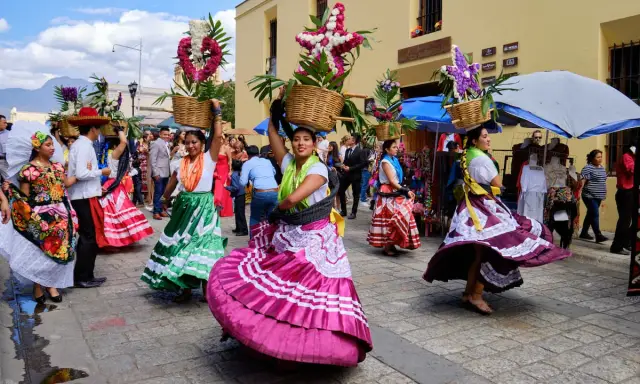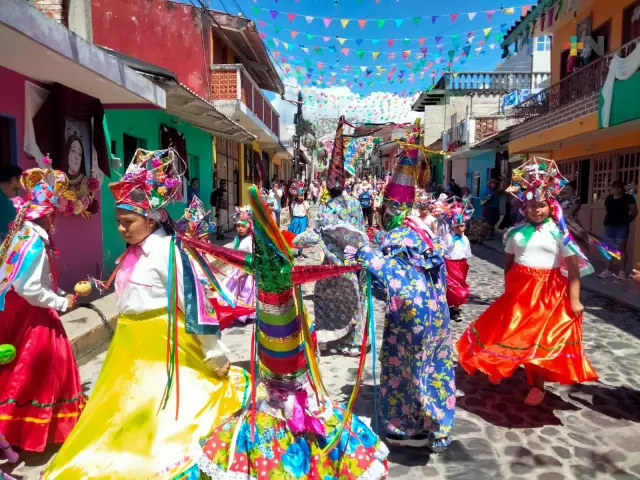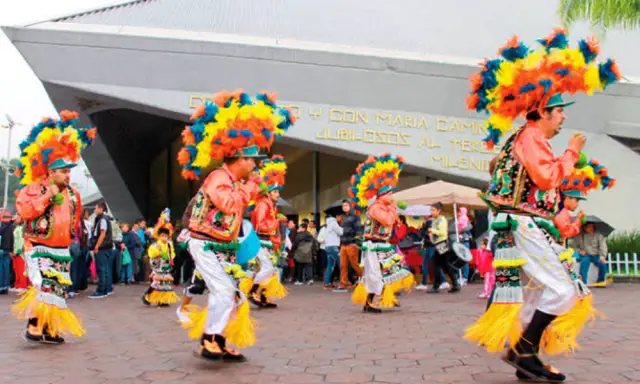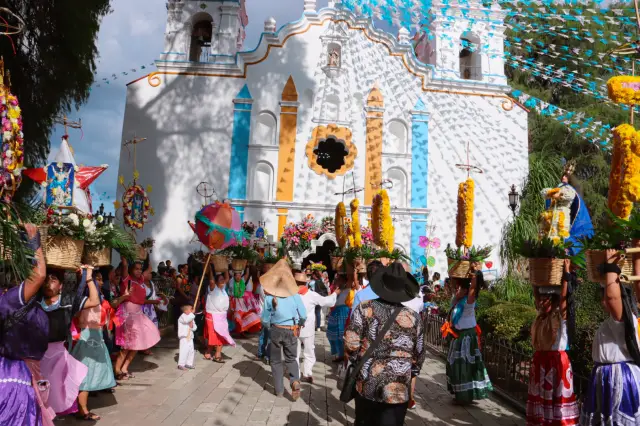The month of July represents a season full of life and color for many Mexican communities. Throughout the country, patron saint festivals are held that not only have strong religious significance but also serve as an expression of cultural identity and regional pride. These festivities, deeply rooted in the history and heart of each community, bring together thousands of people around processions, dances, traditional cuisine, solemn masses, and popular fairs.
The special thing about these celebrations lies not only in their spiritual aspect, but also in the social interaction, the transmission of ancestral knowledge, and the opportunity to showcase the richness and diversity of Mexican folklore to the world. July thus becomes a month where tradition becomes a celebration, and faith becomes a collective spectacle.

Main Patron Saint Festivals in Mexico – July
Feast of Our Lady of Mount Carmel – July 16
The festival honoring the Virgin of Carmen , one of the most popular invocations of the Virgin Mary, is celebrated with particular fervor in states such as Veracruz, Campeche, Mexico City, Puebla, and Baja California Sur . Patron saint of fishermen, sailors, and transporters, the Virgin of Carmen is venerated in ports and coastal communities, where maritime processions become visually stunning events.
Images of the Virgin, adorned with flowers and lights, are carried on decorated boats that sail through bays and lagoons, accompanied by prayers, music, and fireworks. In addition to religious services, the celebration includes cultural activities such as folk dances, craft fairs, and sporting events that reflect the festive and collaborative spirit of the community.
Saint James the Apostle – July 25
July 25th is the feast day of Saint James the Apostle , a crucial figure in Mexican religious syncretism. Venerated as a warrior saint and protector, his feast day is celebrated intensely in places such as Santiago Tuxtla (Veracruz), Tonalá (Chiapas), Santiago Tianguistenco (Edomex), and in numerous communities in Oaxaca and Querétaro .
During this time, the squares are filled with color and energy with the dances of the Santiagueros , who, wearing embroidered costumes, headdresses, and wooden swords, recreate the battle between Moors and Christians, symbolizing the victory of good over evil. The festivities include masses, fairs, parades, fireworks, and the sale of regional snacks that complement the cultural and spiritual experience.

Regions with notable celebrations in July
Oaxaca: Syncretism and Living Tradition
The state of Oaxaca is known for being one of the epicenters of cultural diversity in Mexico, and during July this richness is fully on display. Although Guelaguetza is not a patron saint festival as such, many of its activities coincide with the celebrations of St. James the Apostle and other religious festivities of the month. Municipalities such as Zaachila, Cuilápam de Guerrero, and Santiago Matatlán stand out for their celebrations that integrate Catholic religiosity with ancient Zapotec traditions.
At these events, visitors can witness ancestral rituals, indigenous dance performances, local produce markets, and processions where the community actively and proudly participates, presenting visitors with an example of a living and constantly evolving identity.
Chiapas: Popular devotion and joy
Chiapas , a land of deep spirituality and indigenous presence, intensely celebrates the feast of San Cristóbal Mártir , patron saint of the city of San Cristóbal de las Casas , towards the end of July. This festival is one of the most emblematic in the state and combines Catholic fervor with Tzotzil and Tzeltal traditions.
During the days of celebration, the streets are filled with flowers, marimba music, dances like the Torito dance, and rituals performed in indigenous languages. Families organize into brotherhoods, and neighborhoods collaborate to decorate churches, organize prayers, and hold mass pilgrimages. All of this creates a festive and mystical atmosphere that reflects the state's religious and cultural diversity.
Common elements of Mexican patron saint festivals
Religious rituals
At the heart of each patronal feast are religious ceremonies: solemn Masses, novenas, rosary prayers, processions with sacred images, and the active participation of the clergy and faithful. These activities strengthen the spiritual sense of the community and create a space for introspection and renewal of collective faith.
Cultural expressions
The festivals are also a showcase for the country's cultural expressions. Traditional dances , such as the matachines, santiagueros, and voladores , are an essential part of the spectacle. Live music—whether from mariachis, wind bands, or indigenous groups—also accompanies the celebrations, creating an atmosphere of joy and conviviality.
Fairs and gastronomy
Each patron saint festival includes a fair selling handicrafts, textiles, rides, and traditional foods . Food plays a starring role: from tamales and tlayudas to barbacoa, mole, or cochinita pibil, depending on the region. These fairs boost the local economy and offer visitors a complete sensory experience.

Why are patron saint festivals important?
Mexican patron saint festivals serve multiple and valuable functions: they are expressions of religious devotion , but they are also a way to keep alive oral traditions, local crafts, and artistic expressions that have been passed down from generation to generation. They also reinforce a sense of belonging, strengthen community ties, and promote cooperation among neighbors, authorities, and visitors.
On the economic level, many of these festivals generate significant income for communities, thanks to religious and cultural tourism, the sale of local products, and the promotion of identity pride.
A celebration that strengthens identity
The patron saint festivities in July are much more than a religious event: they are a multifaceted expression of what it means to be Mexican. They are moments when the past, present, and faith come together to give life to unique traditions. Every dance, every dish, every procession reflects the spirit of a people who keep their history alive through celebration. To participate in or witness one of these festivities is to experience Mexico from the heart of its people, with all its color, flavor, and devotion.
Frequently Asked Questions (FAQ)
What is a patron saint's day in Mexico?
It is a festival that honors the patron saint of a community, combining religious rites with cultural expressions and social activities.
What is the most important holiday in July?
Those of the Virgin of Carmen (July 16) and Santiago Apóstol (July 25) are the most significant, celebrated in different regions with great devotion and joy.
Do you need permission to attend the festivities?
No, these are usually public events. However, it's important to respect sacred spaces and follow the organizers' recommendations.
Where can I find a complete calendar of festivals?
You can find it on the websites of the Ministry of Tourism, municipal governments, or specialized tourist guides.
Are the festivals safe for tourists?
Yes, most have security measures in place. It's always recommended to check with local authorities and take the usual precautions.
